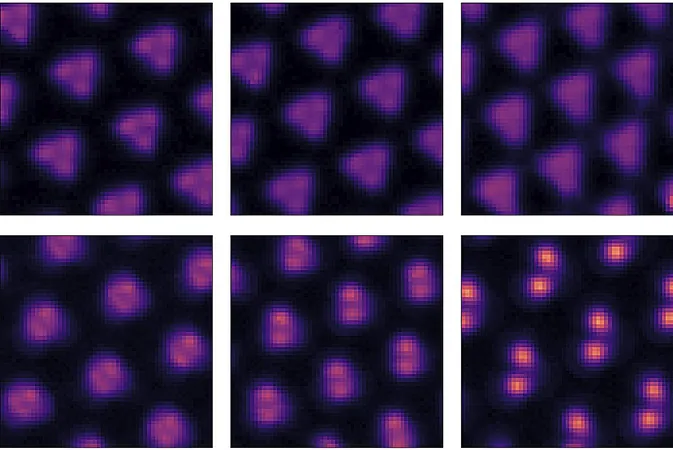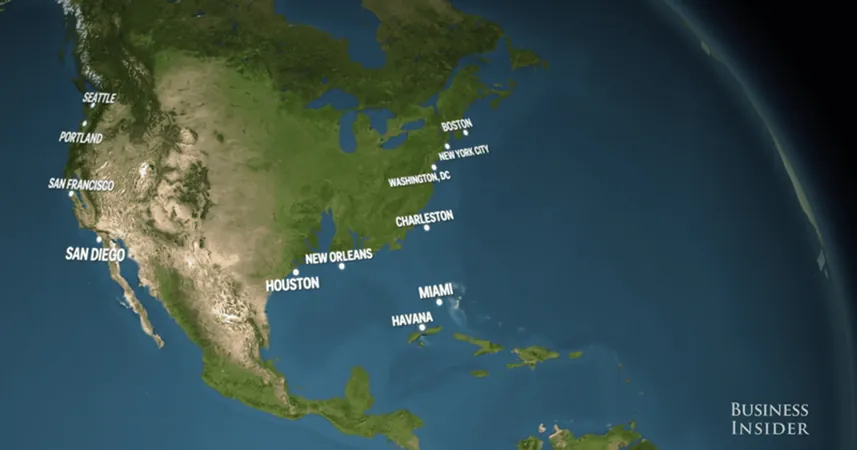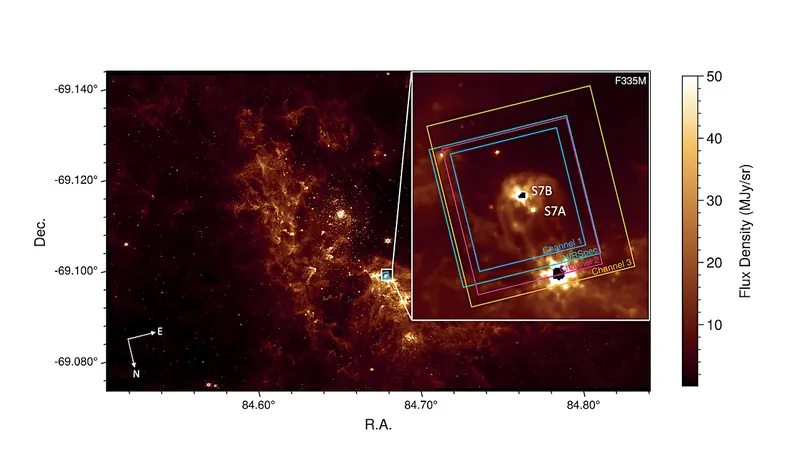
Scientists Unveil a Groundbreaking Quantum Phase: The Wigner Molecular Crystal!
2024-11-07
Author: Nur
In an exciting breakthrough that might change our understanding of material science, researchers have successfully captured direct images of a newly discovered quantum phase known as the Wigner molecular crystal. This achievement, led by esteemed physicists Feng Wang and Michael Crommie from the Berkeley Lab, reveals the complex behaviors of electrons in molecular crystals, a phenomenon theorized nearly a century ago by pioneer physicist Eugene Wigner.
Wigner originally predicted that under certain conditions—specifically at low densities and frigid temperatures—electrons could slow down and arrange into what we now refer to as a 'Wigner crystal' or electron ice. After almost 90 years of speculation and theoretical study, Wang and Crommie finally confirmed its existence in 2021. Their latest findings, recently published in the prestigious journal Science, illuminate a further step in this fascinating field: the existence of Wigner molecular crystals.
Unlike traditional Wigner crystals characterized by a honeycomb lattice of electrons, Wigner molecular crystals present a highly organized arrangement of artificial 'molecules' comprising two or more electrons. This intricate structure marks a significant evolution in quantum material studies, showcasing the potential for entirely new states of matter.
Wang expressed enthusiasm over this pioneering observation, stating, 'We are the first to directly observe this new quantum phase, which was quite unexpected. It's pretty exciting.' Many researchers have long aspired to visualize the Wigner molecular crystal, but previous efforts faced challenges due to the damaging effects of scanning tunneling microscopy (STM) on the delicate electron configurations.
In their latest research, the Berkeley team innovatively tackled this challenge by effectively reducing the electric field generated by the STM tip. This pivotal advancement enabled them to reveal the fine electronic structure characteristic of the Wigner molecular crystal without interference.
The experiment involved creating a novel nanomaterial known as 'twisted tungsten disulfide (tWS2) moiré superlattice.' This was accomplished by stacking an atomically thin bilayer of tungsten disulfide (WS2) over a thin layer of hexagonal boron nitride (hBN) and a graphite back gate, with the WS2 layers twisted at a precise angle of 58 degrees.
Remarkably, the team discovered that by doping the tWS2 moiré superlattice with electrons, they could fill each 10-nanometer-wide unit cell with just two or three electrons. This resulted in an unexpected formation of a lattice of moiré electron molecules throughout the superlattice, thus establishing the presence of the Wigner molecular crystal.
Wang elaborated on the conditions required for this occurrence: 'Low temperatures, coupled with the potential energy landscape created by the tWS2 moiré superlattice, localize the electrons, while the interaction between quantum mechanics and electron pairs drives these localized states into Wigner molecule formations.'
The implications of this discovery are vast, and Wang, Crommie, and their team are eager to conduct further experiments to delve deeper into the properties of this new quantum phase. They aim to uncover the potential applications that the Wigner molecular crystal could facilitate—opening doors to advancements in quantum computing and nanotechnology.
Stay tuned as we witness the evolution of quantum materials science and the amazing developments that lie ahead!






 Brasil (PT)
Brasil (PT)
 Canada (EN)
Canada (EN)
 Chile (ES)
Chile (ES)
 España (ES)
España (ES)
 France (FR)
France (FR)
 Hong Kong (EN)
Hong Kong (EN)
 Italia (IT)
Italia (IT)
 日本 (JA)
日本 (JA)
 Magyarország (HU)
Magyarország (HU)
 Norge (NO)
Norge (NO)
 Polska (PL)
Polska (PL)
 Schweiz (DE)
Schweiz (DE)
 Singapore (EN)
Singapore (EN)
 Sverige (SV)
Sverige (SV)
 Suomi (FI)
Suomi (FI)
 Türkiye (TR)
Türkiye (TR)